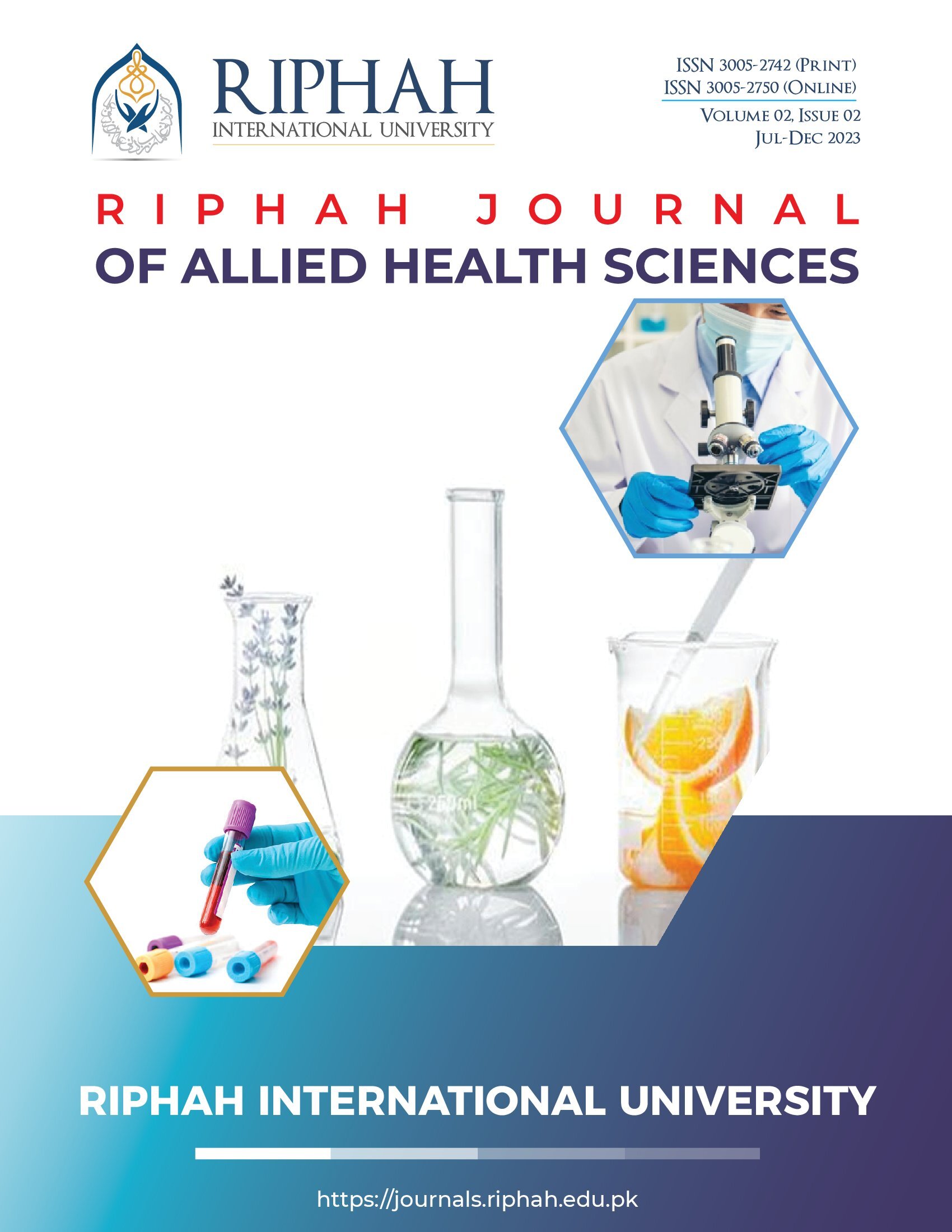Synthesis and Characterization of Nanoparticles using Actinomycetes and its Evaluation for Antimicrobial Potential
Keywords:
Silver Nanoparticles, Actinomycetes, Synthesis, CharacterizationAbstract
Background: In the field of sustainable nanotechnology, eco-friendly methods of synthesizing nanoparticles are gaining popularity. Various types of microbes and plants have been used to synthesis the nanoparticles.
Objectives: To synthesis of silver nanoparticles (AgNPs) using Actinomycetes isolates and to characterize their antibacterial and antifungal activity.
Methodology: Actinomycetes extract was combined in various ratios with 1 mM AgNO3 to produce AgNPs. Visual examination and UV-V spectrophotometry were employed to confirm production of AgNPs, with an ideal 1:9 ratios. X-ray diffractometry was applied in the structural analysis to determine the cubic, crystalline nature of AgNPs. Aromatic amines were found to be essential components in AgNP synthesis by FT-IR spectroscopy. Atomic Force Microscopy size analysis identified nanoparticles with sizes ranging from 1 nm to 7.5 nm. Using the agar disc diffusion method, nanoparticles were assessed for their antibacterial and antifungal properties.
Results: AgNPs revealed variations in antifungal and bacterial activities. Large sizes zones of inhibition were observed for various bacterial strains and fungi species as AgNP concentrations increased (300 ppm, 400 ppm, and 500 ppm). These results demonstrate the concentration-dependent efficacy of AgNPs in preventing bacterial and mycotic infections.
Conclusions: Actinomycetes extracts allowed for the environmentally friendly synthesis of AgNP, yielding nanoparticles with potent antibacterial and antifungal properties linked to concentration. This highlights the capability of AgNPs for sustainable nanotechnology's biomedical and environmental applications.


